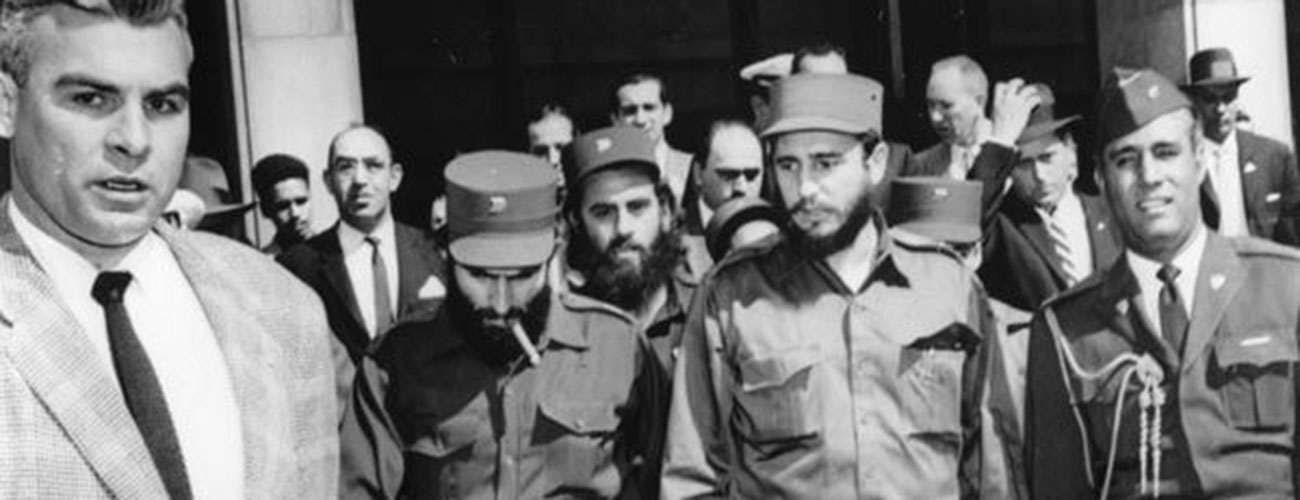Sign up for The Media Today, CJR’s daily newsletter.
The death of Fidel Castro led to a flurry of retrospectives on Cuba, the revolution, and name-calling. The New York Times obituary noted that Castro was often considered “above all an old-style Spanish caudillo, one of a long line of Latin American strongmen who endeared themselves to people searching for leaders,” and an analyst called Castro the “ultimate 20th-century caudillo.” In The Los Angeles Times, Castro was labeled “the longest reigning of the 20th century caudillos — Latin American military rulers.”
Those definitions are useful, since “caudillo” may not be a term familiar to everyone.
Let’s start with the dictionary definition: Merriam-Webster says a “caudillo” is “a Spanish or Latin-American military dictator”; Webster’s New World College Dictionary is a little more precise: “a leader, esp. a military dictator, of a Spanish-speaking country.” The Oxford English Dictionary is neutral, defining “caudillo” as “The head or chief of state of a Spanish-speaking country.”
The word itself comes, of course, from the Spanish, for leader or chief, which itself came from a Latin diminutive for “head.”
The Encyclopaedia Britannica, still a useful resource even in the days of Google, says “caudillo” arose 200 years ago:
In the wake of the Latin American independence movement in the early 19th century, politically unstable conditions and the long experience of armed conflict led to the emergence in many of the new countries of strongmen who were often charismatic and whose hold on power depended on control over armed followers, patronage, and vigilance.
“Caudillo” continued its march into the 20th century, applied to, among others, Manuel Noriega of Panama, the Somoza family in Nicaragua, Augusto Pinochet of Chile, and Fulgencio Batista, whom Castro overthrew, exchanging one “caudillo” for another.
The OED notes its first use in English in 1832. Generalissimo Francisco Franco assumed the title “El Caudillo” when he took over Spain in the late 1930s. (And how many of us can’t hear that name without immediately appending “… is still dead”?)
“Caudillos” can be rightist or leftist; what’s important is that they are authoritarian, which was true of all of the ones already named.
But wait! “Caudillos” aren’t just for Spanish strongmen any more. The Huffington Post called president Rodrigo Duterte of the Philippines a “21st Century Caudillo.” One Washington Post column about Donald Trump’s threats to jail Hillary Clinton said: “Vladimir Putin, Hugo Chavez and a cavalcade of two-bit caudillos lock up their opponents. American leaders don’t.”
You know where this is going: Trump himself is also being called a “caudillo.” A Peruvian political scientist told The Washington Post that “Trump resembles a classic Latin American type of populist, the caudillo, a Spanish term that translates roughly to ‘strongman’ or a leader with authoritarian tendencies.”
Note that this is the second Washington Post story we’ve cited: The Post uses “caudillo” a lot lately. But there are others: The New York Times quoted “a range of experts” as saying that Trump’s business tactics “may be ineffective at best, and crony-capitalist and caudillo-like at worst.” The Huffington Post has used the term 17 times this year by our count, mostly referring to people who were not Donald Trump.
As always, using a word your readers might not understand can send them to the dictionary—and how do you know they’ll come back? And because “caudillo” evokes for many who understand the term the image of brutal regimes, not just authoritarian ones, it should be used with caution when referring to someone who might not fall into that category.
Language usage, at its best, is not that dictatorial.
Has America ever needed a media defender more than now? Help us by joining CJR today.



